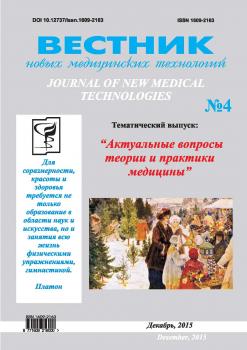Algebraic model of constructive logic is developed in Russia and is used for many years in medicine and biology for multivariate analysis and for building expert systems. In the process of improving the algorithm of the algebraic model of constructive logic and software, the methods of the study of population health with the use of these models are improved. The tasks of providing a compact representation of the mathematical model are solved, the version of algorithms and programs with different reaction to incomplete source data is created, an analytical and methodological support of research is developed. The article presents the results of practical work to improve the working methods of the study of population health. It covers the issues of verification of source data, an obtainment a compact mathematical models, the valuation and completeness of the source data, the main highlight of the resulting components, the exclusion of inconsistencies in the source data, the absorption of the analyzed factors, the principles of the analysis of the factors in mathematical models and principles of construction of expert systems. The authors showed that the classical and modernized versions of the algebraic model of constructive logic have their applications and are not exclusive of each other. This article also provides recommendations and explanations that facilitate the realization of analytical studies using algebraic models of constructive logic.
logic, mathematical model, analysis, methods of study.
Алгебраическая модель конструктивной логики (АМКЛ) создана в России в 1983 году и предназначена для построения многофакторной нелинейной математической модели [1,2]. На протяжении многих лет она используется для анализа в медицине и биологии [3-19,24]. Наряду с этим АМКЛ используется для построения экспертных систем [28,29].
Исходными данными для построения математической модели является таблица. Каждая строка в этой таблице рассматривается как случай, в котором занесены значения факторов (в факторных столбцах) и результат их воздействия (в целевом столбце).
Результирующая математическая модель представлена набором результирующих составляющих в виде факторов с указанием пределов определения, объединенных знаком конъюнкции (указывающим на совместное воздействие). Каждая результирующая составляющая характеризуется мощностью (W), являющейся сутью числа строк в таблице, которые соответствуют указанным пределам определения факторов при их совместном действии.
АМКЛ можно характеризовать следующим образом.
По назначению:
1. Многофакторный анализ:
- на основе классического алгоритма;
- на основе модернизированного алгоритма.
2. Экспертная система:
- на основе классического алгоритма;
- на основе модернизированного алгоритма. Многофакторный анализ:
1. Выявление и количественная оценка отличий исследуемого процесса.
2. Количественная оценка влияния факторов на результат при их сочетэнном воздействии.
3. Выявление ограничений и условий, при которых анализируемый метод лечения показан пациенту.
4. Оптимизация действий медицинского работника.
Экспертная система:





